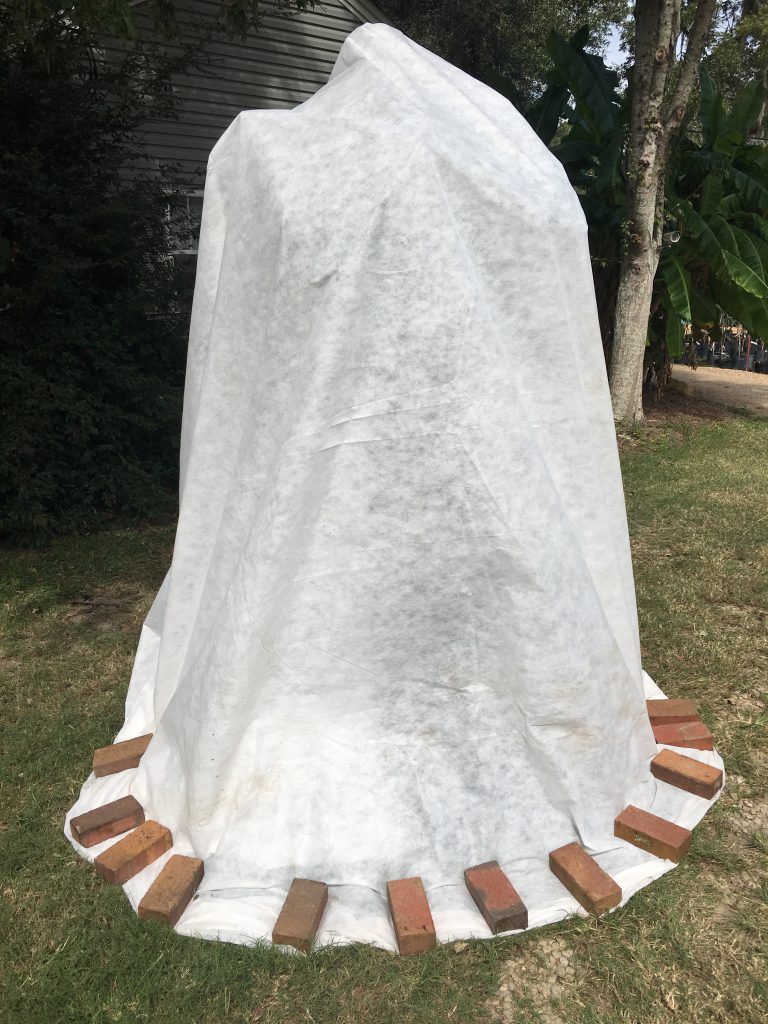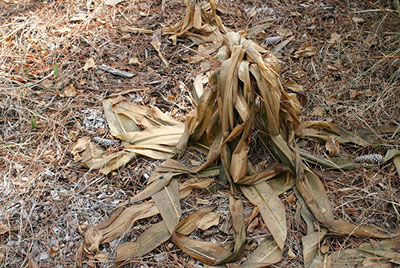January and February are typically the coldest months in Florida. Low temperatures can damage even the more cold-hardy plants. However, there are measures that can be done to help cold-damaged plants recover.
After a frost or freeze, see if your plants are dry. Even injured plants need water. Plants can be greatly damaged if the temperature drops suddenly, as they have no time to acclimate to the freezing temperatures. These freezing temps cause ice crystals to form in plants cells. These crystals expand, rupturing the cell walls and preventing the plant from maintaining shape. If severe, this can certainly kill tender plants. On more cold hardy plants, damaged foliage will appear wilted and curled down. In a few hours or days, it will darken and turn black. Flowers, buds, and new growth often dieback under freezing temps.
After freezing temperatures occur, it’s important to remove damaged leaves and flowers as soon as they turn brown or black. This will help prevent diseases from occurring. Pruning should be postponed until cold temperatures are no longer expected and new growth begins to appear on the plant. This practice ensures live wood, which appears dead from losing its leaves, is not mistakenly removed from the plant. Cold damaged wood can be detected by examining the cambium layer (under the bark) of the plant. If it has black or brown discoloration, it is damaged and should be pruned back behind these points. Plants should be fertilized in the spring, to encourage new growth.
What about proactive care? You can accomplish this by moving potted plants indoors and covering tender landscape plants with a protective covering. Protective covering can include old bed sheet, pieces of material or fabric, and cardboard boxes. Be careful not to let the protective covering touch the plants. The surface of the covering will become as cold as the air temperatures and may damage any tender leaves it encounters. Also, don’t forget to remove the covering the next day when temperature raises this is important so the plants do not “bake” in the warmer temperatures. Plants placed near the house, lights, or other structures, which shelter them from wind, will be more protected than those fully exposed to the cold air.

Use frost cloth to completely cover cold sensitive plants. Be sure to make complete contact with the ground and use heavy objects to keep the fabric secure. Photo by Jonathan Burns.
For more information on freeze damage plants contact your local county extension office.
Supporting information for this article can be found in the UF/IFAS Extension EDIS publication: “Cold Protection of Landscape Plants”, by Sydney Park Brown: https://edis.ifas.ufl.edu/publication/mg025
- Why Are Sand Dunes & Sea Oats So Important? - March 20, 2025
- How to Care for a Gift Plant - December 5, 2024
- Fall Leaf Colors Are Just Around the Corner - September 4, 2024

